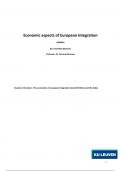Samenvatting
Summary Economic aspects of European Integration - 16/20
Economic aspects of European Integration
Chapter 1 to Chapter 13 (without chapter 2 and 3)
D0M09a
Professor: Dr. Yannick Bormans
[Meer zien]
Voorbeeld 4 van de 126 pagina's
Heel boek samengevat?
Ja
Geupload op
30 september 2024
Aantal pagina's
126
Geschreven in
2023/2024
Type
Samenvatting
€10,66
100% tevredenheidsgarantie
Direct beschikbaar na betaling
Zowel online als in PDF
Je zit nergens aan vast
Economic aspects of European Integration




